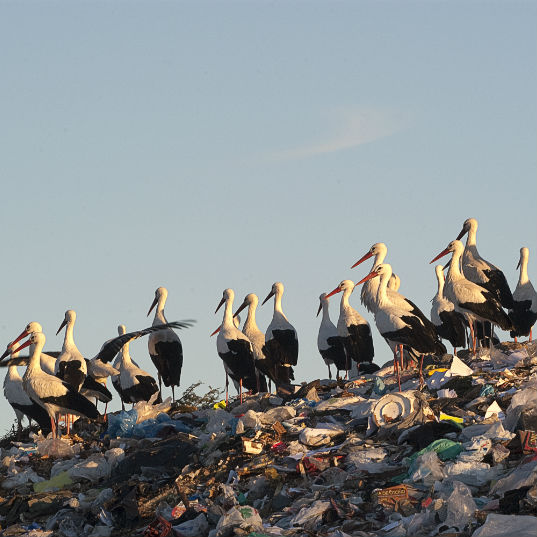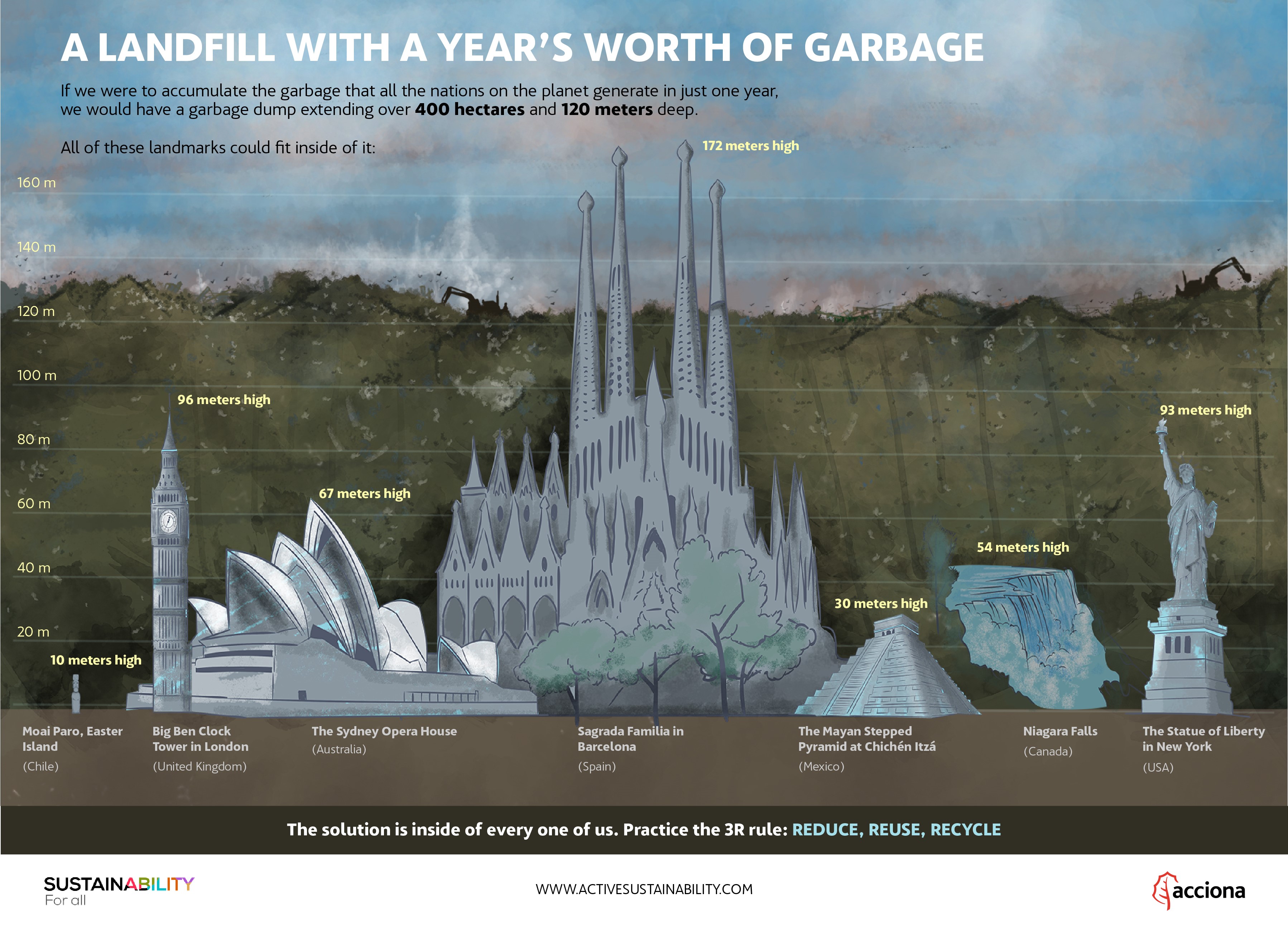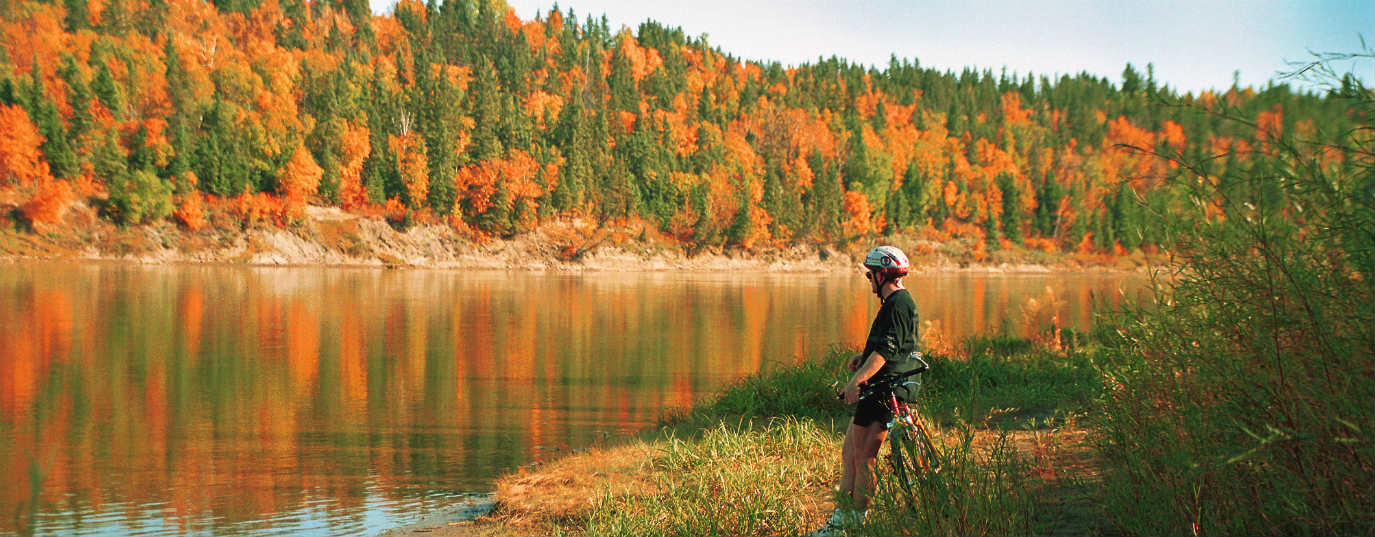Landfills: a serious problem for the environment
Landfills are the antithesis of sustainability. This is how the garbage impacts in our environment.
The world keeps generating more and more rubbish. According to a report conducted by the World Bank, the planet produced 2.01 billion tons of waste in 2016 — a figure that could rocket to 3.4 billion by 2050, representing an almost 70% increase in rubbish in just 30 years. We live in a throw-away society and we're paying the price; we don't know what to do with all our waste.
Thanks to the help of citizens who separate recyclable waste and the authorities that have acted effectively to treat it in its recycling plants, much of the waste we generate takes on a second life, though this is unfortunately not standard practice. Most rubbish ends up in landfills.
The report conducted by ISWA (International Solid Waste Association), one of the world's leading organisations in the solid waste treatment sector, A Roadmap for closing Waste Dumpsites, determined that landfill sites currently contain approximately 40% of the world's waste and that the 50 largest landfill sites impact the daily lives of 64 million people — equivalent to the entire population of France.
How does landfill work?
A landfill site is a location that has been prepared for the purpose of dumping waste, rubbish or debris. Before the land is used to store waste, diggers are used to give it a suitable shape and it is covered with an artificial water-resistant coating to prevent the rubbish from contaminating the soil. The law states that landfill sites must be located away from inhabited areas, as well as areas used for farming or drinking water.
Waste is crushed and compacted—so it occupies as little space as possible—then transported in lorries to outdoor landfill sites, where it is dumped and buried under layers of soil to decompose.
But the truth is that much of this waste take years to decompose due to the conditions of the landfill sites—where there is little oxygen and moisture—and the characteristics of the materials.
Why are landfill sites so harmful to the environment?
Burying waste in the ground has an impact on our environment, even when done in a controlled manner. The main problems that municipal landfill sites generate for the environment are detailed below.
1. Landfill are one of the causes of climate change
Landfill sites are partially responsible for global warming as they generate and release biogas into the atmosphere. Biogas is a mixture formed primarily of methane gas (CH₄) and carbon dioxide (CO₂), two of the gases that cause climate change and an increase in the planet's temperature. According to the ISWA report, if the current situation continues and we do not take action, landfill sites will account for 10% of greenhouse gas emissions by 2025.
Some of these landfills have degassing methods, which is an improvement over conventional landfills, but still has its drawbacks: degassing is usually performed after the landfill cell has been closed, so methane from the more readily biodegradable components will have already been released into the atmosphere before degassing occurs. Horizontal degassing projects that aim to capture methane while the landfill cell is still in operation achieve better results, but they can only capture a portion of the methane generated.
2. They can cause fires or explosions
Sometimes methane produced by waste from landfill sites can cause explosions and fires. This downside is more common than meets the eye, because the fires that occur are not regular fires with flames, but fires that occur inside the landfill. Dioxin emissions from these spontaneous uncontrolled fires are also very harmful to the environment, not to mention the damaging effects they have on aquifers, whose waterproofing membranes are affected by the fire.
3. They can contaminate soil and water
Landfill sites are often responsible for the contamination of soil and groundwater, as the contaminating materials (such as heavy materials like lead and mercury) that the stored waste may contain can spread to the soil and water near the plant.
Moreover, although it is not very common for waterproofing membranes to rupture, it has a devastating effect on the environment when they do.
4. Landfills alter the fauna

Landfill sites have particularly negative effects on bird migration. Some birds feed from landfill sites , inevitably ingesting plastic, aluminium, gypsum and other materials that are common among waste, which can even prove fatal.
In addition, another of the dangers posed to birds by landfill sites is that they are altering their migratory activity. In recent years, there has been an increasing number of cases of species that have stopped migrating to the south and are instead choosing to nest in areas near landfill sites thanks to the endless food supply they provide. This is not only detrimental because, as we have seen, this can be a deadly diet for them, but also because their young already tend to ignore traditional migratory behaviour, so the problem is exacerbated with each generation.
5. Landfills reduce the value of the surrounding areas
The bad smells that emanate from landfill sites cannot be effectively controlled and, almost inevitably, reach nearby populations. Property prices are reduced in areas located near to these waste stores, which further perpetuates the devaluation of disadvantaged areas.
6. Accidents sometimes occur in landfill sites
In March 2017, the Addis Ababa landfill site in Ethiopia collapsed, causing an estimated 113 deaths. Only a month later, the Meethotamulla landfill site in Sri Lanka suffered a landslide, leaving more than 30 people dead, dozens of people missing, and more than 140 houses destroyed. In February 2020, two workers were killed when the Zaldívar landfill site in Spain collapsed. Rain, spontaneous combustion or excessive accumulation sometimes turn landfill sites into unstable terrain where landslides or collapses are very dangerous for plant workers and for nearby areas.







